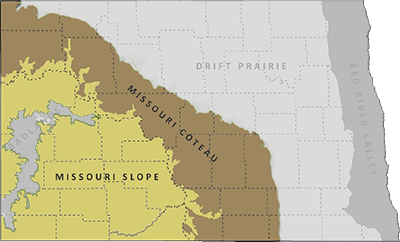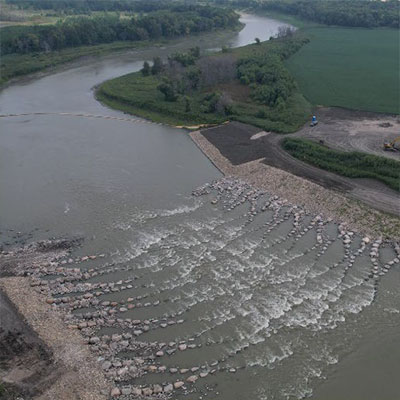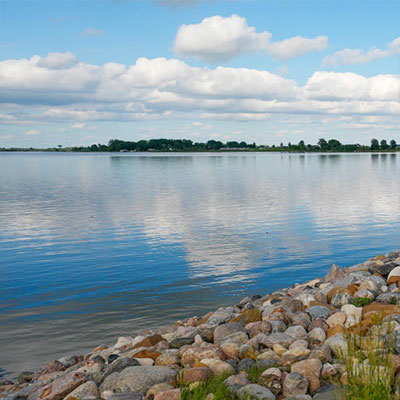Sturgeon Chub

Dave Ostendorf
Grows to a length of 4 inches. Member of the minnow family. Light green to brown on dorsal side with a lighter ventral region. Brown and silver spots cover its sides. The snout extends over the mouth, with a barbel in each corner. Similar to the Sicklefin Chub except the dorsal fin has a straight edge.
Status in North Dakota
Year-round resident.
Reason for SWAP Designation
A native species, but found in lower numbers than historically.
Habitat loss is the main reason for this designation.
Impoundment and channelization of the Missouri River System has changed the slow-moving, warm, turbid water to fast, clear and cold.
Threats
The loss of suitable habitat caused by a change in the riverine regime is the largest problem affecting this species.
Historically, Sicklefin Chub were present throughout the entire Missouri River system.
The construction of dams and channelization has largely changed the river System.
Dams have reduced the sediment load, in turn lowering turbidity.
The release of cold water from impoundments has lowered the overall temperature of the system, making much of the Missouri River too cold for Sicklefin Chub.
Dams also have fragmented populations by restriction movement throughout the system.
Entrenchment due to regulated flow control of the Missouri River has increased the rate of flow through the system.
Narrowing of the river channel has reduced habitat and changed the natural cycles of the river by reducing over-land flooding.
Sicklefin Chub now only occur in those areas that maintain qualities of the pre-impoundment system.
Research and Monitoring
- Young of the year sturgeon chub are sampled as part of the Pallid sturgeon Population assessment program.
- No dedicated research and monitoring occur for this species.
Management Recommendations
- Identify and protect important spawning and rearing areas.
- Continue to use the Section 404 program to ensures affected rivers and riparian areas are mitigated to replace form and function.
- Continue to work with other federal agencies not covered by 404 to ensure affected rivers and riparian areas are mitigated to replace form and function.
- Continue to work with NDSWC to develop instream flow recommendations.
- Promote incentive programs to restore riparian areas.
- Continue to work with ND 319 Task Force in prioritizing projects within impaired watersheds and implementing BMPs.
- Implement intake conditions or recommendations.
- Cooperate with NDGFD Fisheries staff on state aquatic nuisance species plans.
- Removal of dams and other barriers.
- Retrofitting dams with fish passage structures.





